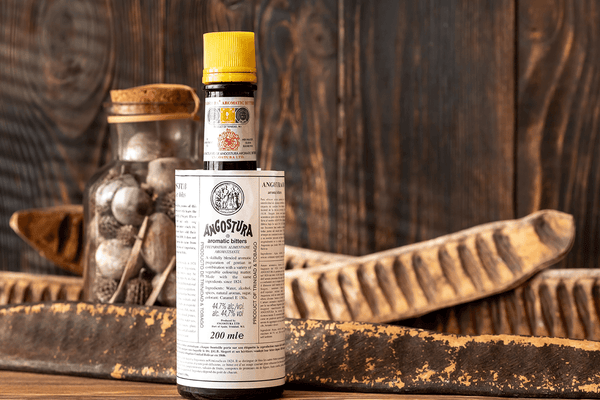FOUR GRAIN BOURBON
A four grain bourbon is one which includes four distinct grains or, possibly contains three or more grains with grain processing (malting) variations.

A four grain bourbon has a different mash bill and distilling process compared to most other bourbons on the market. A mash bill, or “recipe” is what a distiller uses to create a consistent bourbon; much like a recipe for any other food. The most common bourbon mash bill among different bourbon brands consists of two primary grains - corn and barley. Since corn is a legal requirement, all bourbons must contain at least 51% corn in their mash bill. The remaining 49% may be a combination of more corn, barley, rye or wheat.
Some grains in mash bills undergo a process referred to as “malting” or, it is said to have “malted grains” in the mash bill. Malting simply means sprouting the grains (germination) for a period of time before drying and then using in the mash bill for fermentation.
Even though the most typical or standard bourbon recipe may be just corn and barley, or corn and wheat - there are many different possible combinations of each that may result in a very desirable bourbon or one that is just “so-so.” Further, the actual distilling process, barrel type, char number, and aging process all play a part in the finished bourbon. So, even two bourbon brands with a mere 1% difference in corn to barley ratio may taste vastly different from one another.
But, what about a four grain bourbon? What might a mash bill for a 4-grain bourbon look like? A four grain bourbon is one which includes four distinct grains or, possibly contains three or more grains with grain processing variations. Here is an example mash bill:
- 70% corn
- 10% malted wheat
- 10% honey malted barley
- 10% malted barley
As we see with the example mash bill above for Cavehill Kentucky Straight Bourbon Whiskey, Rabbit Hole Distillery uses what would be considered four unique and separate grains in their four grain bourbon. They have upped the minimum legal corn requirement from 51% to 70%, and then included three additional malted grains in their mash bill. In fact, this particular spirit expression identifies as being a "4-grain, triple malt" - since three of the four grains used in the mash bill are "malted."
The second grain in this four-grain mash bill is malted wheat. Malted wheat is a very common ingredient in craft beers, German beers and can even be used as a baking ingredient. The process of malting wheat in a four grain bourbon recipe can be very different - and it depends on the distiller to determine to exactly what point the germination or “malting” process should stop - and the drying process begins. Additionally, the drying process may be different among distilleries.
The third grain in this 4-grain bourbon is honey malted barley. Honey malt barley does not actually contain any honey. Instead, the unique germination process (malting process) it undergoes causes it to develop a rich sweetness and honey-like flavor. The honey malt process is one that restricts oxygen to the barley during the germination process. In essence, the barley is “self-stewed.” The oxygen restriction increases heat levels in the malting grain vats, allowing a wide variety of sugars and rich “malty” flavors to fully develop. This carefully controlled process is different among distillers and each adds their own nuances to create a final honey malted barley they want to use in their mash bill.
The fourth grain in this four grain bourbon is malted barley. Although no special germination process is used in basic malted barley as compared to honey malted barley, the process is still tightly controlled and unique from distillery to distillery.
Much the same with almost every other consumable product available globally, there are defining characteristics and nuances between different bourbon brands - and this is true even among various brands claiming to be “four grain bourbons.” One brand of four grain bourbon might have a mash bill slightly different than the one above - for instance, it might contain 69% corn, 11% malted wheat, 10% honey malted barley and 10% malted barley. The 1% difference may seem insignificant, but taking that change into consideration along with slight variations in other aspects like:
- Sourcing high-quality grains
- The malting process of the grains
- Drying process of the grains
- Fermentation process of the grains
- Distilling process of the raw bourbon (White Dog)
- The sourced wood and manufacturing of the bourbon barrel
- The bourbon barrel toasting (if any)
- The barrel char level (i.e. #1, #2, #3, #4…)
- The aging process and time of the bourbon
- The climate control system in the rick house
- The relative humidity and temperature of the rick house
- The blending process from multiple barrels
- Etc.
You can see how even with the exact same mash bill two bourbon distillers claiming to have a “four grain bourbon” may taste so different, it is like two different spirits all together. It is definitive that not only are no two four-grain bourbon brands the same, it would be nearly impossible to find two similar four grain bourbon barrels within the same distillery!
With four grain bourbon options, there are near endless combinations to create unique and one-of-a-kind mash bills. Slight adjustments in any one of numerous factors can drastically alter the taste and consistency of a particular bourbon expression.
To so many who enjoy bourbon, the craft and attention to detail are not always fully understood, nor appreciated for the intricate and unique journey they take from raw grain to finished spirit. If you are new to bourbon, or a seasoned bourbon connoisseur - be sure to add trying a premium four grain bourbon to your list.






